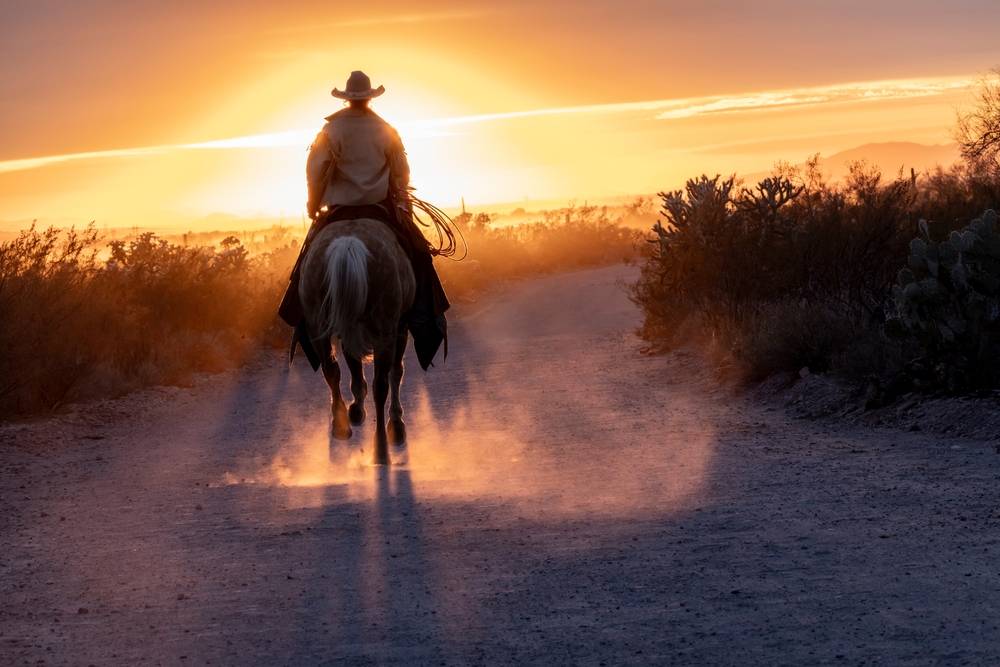Living the cowboy way may evoke images of wide-open spaces and a life spent in the saddle, and for modern cowboys, this romanticized vision isn’t far from the truth. From the crack of dawn, the day begins with feeding stock, checking on cattle, and ensuring that the ranch operates smoothly. A cowboy’s life revolves around the herd, and every task, whether it’s roping steers or mending fences, plays a crucial role in ranch maintenance.

The rhythm of life on a ranch is guided by daily responsibilities and the ever-present needs of the animals. Midday might bring a blend of chores, such as repairing equipment or completing office work. The work doesn’t end with the setting sun; evenings often feature training horses or spending time with family by the fishing hole. Every aspect of life on a ranch underscores a deep connection to the land and animals.
Preserving the cowboy legacy is more than a task; it’s a way of life. Modern cowboys embrace the traditional cowboy code while leveraging technology to share their experiences. This blend of old and new ensures that the cowboy way of life remains vibrant and continues to inspire future generations.
Morning Chores and Start of the Day
Morning rituals on the ranch are packed with activity, beginning before dawn. Cowboys and ranch hands tackle crucial tasks like feeding livestock, mending fences, and patrolling on horseback to ensure everything is in order.
Feeding Livestock
The day starts early with cowboys rising around 4 AM to feed the livestock. Cows, horses, and other animals need their morning meals promptly to maintain their health and productivity. This involves distributing hay, grains, and water.
Cows are generally milked twice daily, contributing to the early rise. Ensuring that animals get their feed in a timely manner is essential as it sets the tone for the day. The feeding process is meticulous, requiring attention to each animal’s specific dietary needs.
Mending Fences and Maintenance
Maintaining the ranch infrastructure is a daily responsibility. Cowboys and ranch hands routinely inspect fences for damage from weather, animals, or age. Broken sections are repaired promptly to prevent livestock from wandering off.
Other maintenance tasks include oiling and checking equipment such as hay balers and tractors. Ensuring that tools and machinery are in good working order is critical for the day’s upcoming tasks. Fall often brings additional projects like cleaning and storing equipment or even starting new construction projects.
Horseback Patrolling
Patrolling the ranch on horseback allows cowboys to cover large areas quickly and efficiently. They check the conditions of pastures, water sources, and the general health of the livestock. This practice is invaluable for spotting issues that need immediate attention, such as injuries to animals or breaches in fencing.
Riding skills are crucial, as cowboys navigate through different terrains and weather conditions. Horseback patrolling also offers a chance to bond with their horses, reinforcing the partnership that’s vital for the smooth functioning of the ranch.
Afternoon Activities and Downtime
In the afternoon, cowboys engage in essential tasks like herding and monitoring cattle, training young horses, and taking some well-earned leisure time. These activities are key to maintaining the ranch’s efficiency and ensuring the well-being of animals.
Herding and Monitoring
Cowboys spend a significant part of their afternoon herding and monitoring cattle. They ride through the pastures, keeping a watchful eye on the herds. Identifying sick or injured livestock is a priority, as is ensuring that all animals have access to water and food. This task is not just about moving cattle; it’s about understanding their behavior and needs to keep the herd healthy.
Sometimes, they use ATVs or horses to cover large areas quickly. Checking the fences is another crucial task to prevent escapes and protect against predators.
Training Young Horses
Training young horses is a critical and rewarding part of a cowboy’s afternoon. This process involves getting the horses accustomed to human interaction, teaching them basic commands, and preparing them for riding. Cowboys start with groundwork, which includes leading, tying, and desensitizing the horse to various stimuli.
As the horse becomes more comfortable, cowboys introduce saddles and eventually riders. Patience and consistency are essential, as each horse responds differently. This training not only enhances the horses’ skills but also builds trust between the animal and the cowboy.
Leisure Time and Relaxation
After a long day of hard work, cowboys find a bit of downtime to relax. This might include engaging in hobbies like playing the guitar, fishing, or simply taking a nap. Leisure activities help them unwind and recharge for the next day.
Socializing is also important, and many enjoy sharing stories and a meal with fellow cowboys. This camaraderie helps build a strong sense of community and mutual support.
